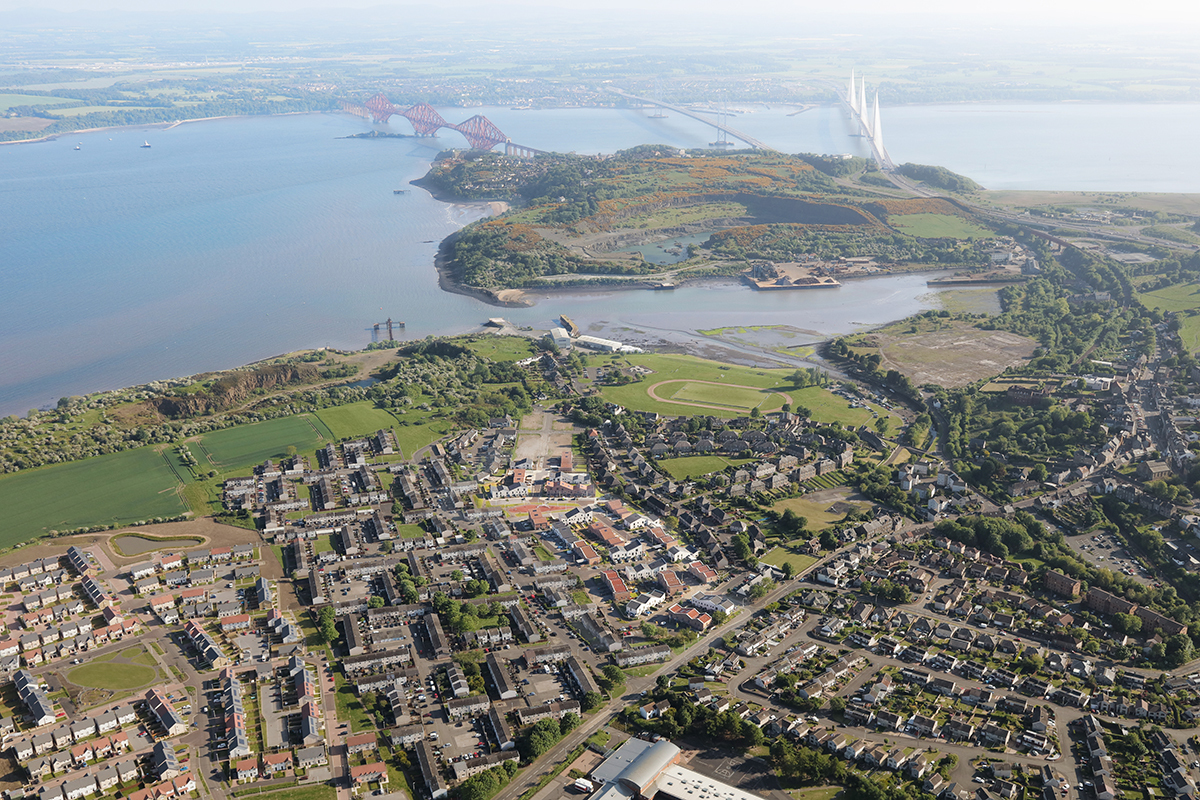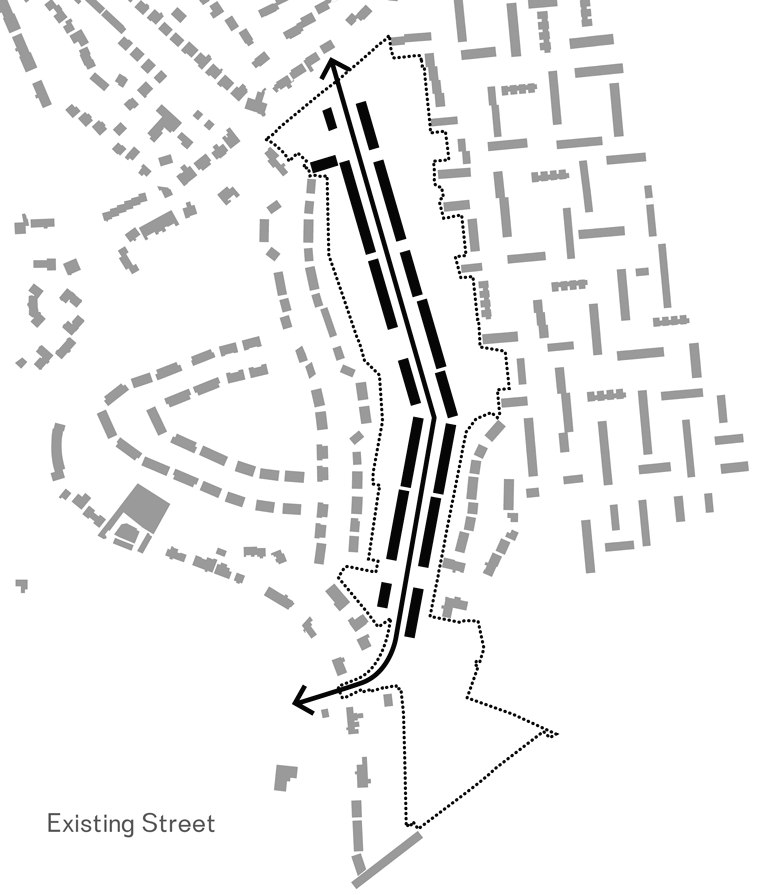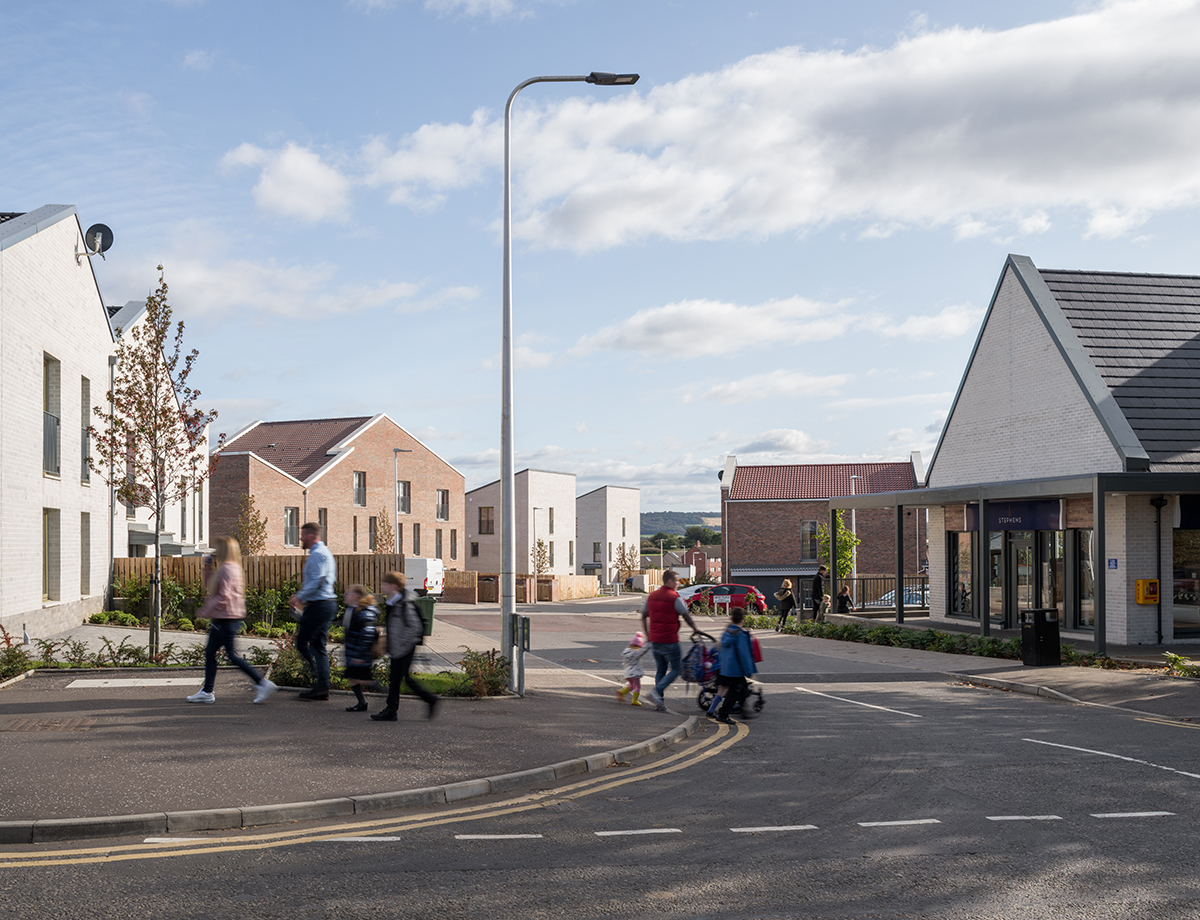
The places that architects and urban designers design have a significant impact on the wellbeing of the people who live in them and engage with them, both positive and negative. Doing this properly takes time, care and resources.
The housing regeneration project at Fraser Avenue transformed an unloved 1950’s council estate in Inverkeithing, Fife, where residents faced many challenges with their environment and felt isolated and stigmatised. The regeneration proposals sought to combat these challenges by creating a new neighbourhood where every space had a clear, positive, purpose which gave each home a defined sense of ownership to give the residents a renewed sense of belonging within their community. The project incorporated extensive engagement with the existing tenants, not just by 7N during the planning stage, but by Kingdom Housing Association and Fife Council throughout the whole process. The scope and nature of this engagement played a significant role in instilling this renewed and precious sense of community and belonging.
A post-completion workshop, facilitated by Architecture & Design Scotland (A&DS) documented feedback from residents to assess how they felt about their new neighbourhood. Statements such as “people are talking to their neighbours again for the first time in years”, “the children are playing in the streets again” and “I feel so much better, I’m off my medication” reveal in a very candid way the positive impact that the new environment has had on the residents’ wellbeing.
The challenge is how you quantify it, beyond this anecdotal feedback, to make the case that the extra time and resources which go into doing this level of engagement, and working directly with an existing group of tenants in this way, justifies the additional level of funding needed to support it.
“Investing in wellbeing” may sound like a lightweight, feelgood endeavour but there are heavyweight social and financial issues which lie behind it. Beyond the capital and carbon cost of re-building failed estates after 40-50 years, the social cost of decades of poor physical and mental health within a community is enormous in proportion to the enhanced cost of making the right level of investment in building sustainable, enduring communities. where people enjoy healthy lives and strong sense of wellbeing.
Intangible though that may be, it is what everyone values most, whatever their circumstances.
The Architecture & Design Scotland report on the project process and post-occupancy engagement workshop with residents can be found here
Drawings by 7N Architects
Aerial photo by Iain Guthrie
Street photo by Gordon Burniston
Model by Finch & Fouracre


